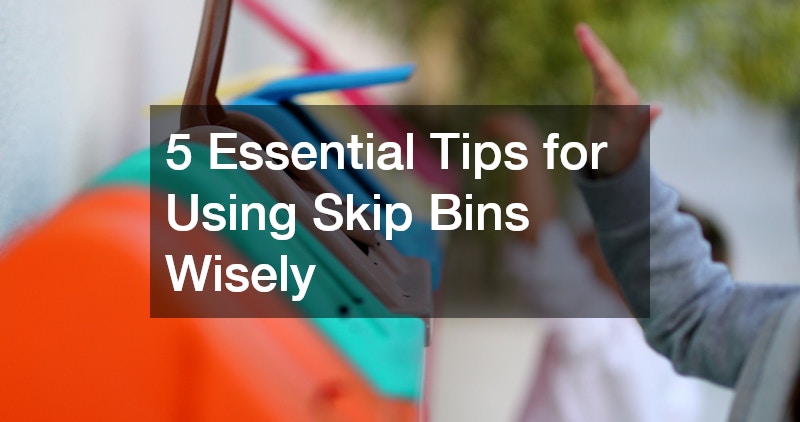Skip bins are an indispensable solution for managing waste in both residential and commercial settings across Australia. Whether you’re renovating your home, clearing out your garage, or managing a construction site, having a skip bin on hand simplifies the clean-up process considerably.
However, using skip bins effectively goes beyond simply filling them up and having them taken away. It’s about being strategic, compliant with local regulations and conscious of the environment. Here are five essential tips to help you use skip bins wisely and get the most value from this practical waste disposal service.
Understand What You Can & Cannot Dispose Of
Before you begin tossing waste into a skip bin, it’s crucial to understand the types of materials that are permitted and those that are strictly prohibited. Most skip bin providers allow general household waste, green waste and construction debris such as bricks, concrete and timber. However, certain materials like asbestos, paint, chemicals, batteries and tyres are often not accepted due to environmental and safety regulations. Placing prohibited items in your bin could result in additional charges or even fines, depending on your local council’s guidelines. It’s best to contact your provider in advance to obtain a full list of what’s allowed. This will help you plan accordingly and avoid unexpected surprises on collection day.
Maximise the Space in Your Skip Bin
Efficient loading of skip bins is an often-overlooked aspect of waste management, but it can save you money and reduce your environmental impact. The key is to load the bin methodically. Start with flat items at the base and break down larger objects when possible. For example, dismantle furniture or flatten cardboard boxes to reduce their volume. As you load up, distribute the weight evenly and avoid creating air pockets. Heavy items like bricks and concrete should go in first to form a solid foundation, followed by lighter materials on top. By packing strategically, you’ll make the most of the bin’s capacity and reduce the risk of needing a second bin unnecessarily.
Choose the Right Size for Your Project
Selecting the correct skip bin size is one of the most important decisions in the waste disposal process. Choosing a bin that’s too small may mean you’ll need an additional bin later, increasing your costs and environmental footprint. Conversely, opting for a bin that’s too large can be a waste of money. Most providers offer a variety of sizes, typically ranging from 2 cubic metres for small domestic jobs to over 10 cubic metres for major construction projects. To gauge the right size, consider the nature of your project and the types of waste it will produce. When in doubt, it’s wise to err on the side of a slightly larger bin to give yourself more flexibility, especially if your clean-up task might grow as you progress.
Be Mindful of Local Regulations & Permit Requirements
In many Australian councils, skip bins placed on public property such as footpaths or roads require permits. These regulations are in place to ensure public safety and avoid disruption to pedestrians and vehicles. Before your bin is delivered, check with your local council to understand if a permit is required and how to obtain one. Some skip bin providers will organise permits on your behalf, which can streamline the process significantly. Failure to acquire the proper authorisation can lead to fines or forced removal of the bin. It’s also essential to ensure the bin does not block driveways, obstruct emergency access, or pose any hazards. By being proactive and adhering to local guidelines, you’ll avoid complications and keep your project running smoothly.
Consider the Environmental Impact of Your Waste
Responsible waste disposal is not just about convenience; it’s also about protecting the environment. When using skip bins, take a moment to sort your waste and consider what can be recycled or repurposed. Many providers now offer dedicated bins for specific types of recyclable waste, including metal, green waste and concrete. Separating recyclable materials helps reduce the volume of landfill waste and supports Australia’s broader sustainability goals. Additionally, if you have reusable items like furniture, consider donating them to local charities before discarding them. Being environmentally conscious when using skip bins is a small effort that contributes to a larger, collective impact on waste reduction and conservation.
Using skip bins wisely involves more than simply filling them with rubbish. It requires planning, awareness and a commitment to doing things the right way. From understanding what you can dispose of, to maximising space and following local regulations, each step contributes to a smoother and more efficient waste management experience. By keeping these five tips in mind, you’ll ensure that your use of skip bins is cost-effective, lawful and environmentally responsible. Whether you’re undertaking a weekend clean-up or managing a large-scale project, a little forethought can go a long way towards making the process as efficient as possible.




